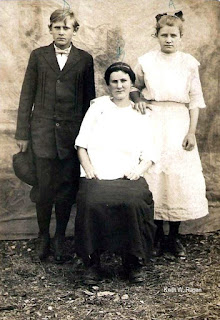Mahala C. Ward Tarlton of Wayne County Missouri

For Our Courageous Grandmother, Mahala If you had asked me who Mahala Ward Tarlton was 20 years ago, I would have had no idea. Once, when we had a family reunion in the Old Greenville, Missouri historic park, I remember my brother and I walking through the old cemetery by the St. Francis River and one of my aunts mentioning we had some Carltons or something similar in our family tree, and that we might find one of their headstones as we strolled through the repository of remains of Wayne County's early citizenry. It was not to be, of course. My mother had told me, several times, the story of one of one of my grandfathers being murdered during the Civil War. The story and the details of the cowardly act upon my ancestor remained vivid throughout all the years of my adolescence but a busy career and a family that included three sons kept the name in obscurity until well into my late 40's when my fascination began with with my ancestry in earnest.. But, the eve
